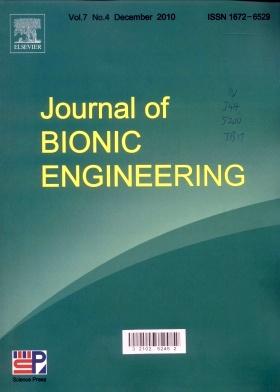Hydrodynamic Characteristic Analysis of a Biomimetic Underwater Vehicle-Manipulator System
Abstract
The propulsion mechanisms of biomimetic underwater vehicles using bionic undulatory fins have been extensively studied for their potential to enhance efficiency and maneuverability in underwater environments. However, the hydrodynamic interactions between the vehicle body, robotic manipulator, and fluctuating motion remain less explored, particularly in turbulent conditions. In this work, a Biomimetic Underwater Vehicle-Manipulator System (BUVMS) propelled using bionic undulatory fins is considered. The propulsion mechanism and hydrodynamic performance of fluctuating motion are analyzed by numerical simulation. The drag coefficients of the BUVMS at different Reynolds numbers are calculated, and the investigation of vortex generation during the motion of the BUVMS reveals that vortex binding and shedding are the key factors for propulsion generation. Various moving modes of the BUVMS are developed in conjunction with the propulsion mechanism. The hydrodynamic loads during the motion of the underwater robotic arm in a turbulent environment are analyzed. A simple motion strategy is proposed to reduce the effect of water drag on the manipulation of the robotic arm and on the overall stability of the BUVMS. The results of the hydrodynamic analysis offer systematic guidance for controlling underwater operations of the BUVMS.

 求助内容:
求助内容: 应助结果提醒方式:
应助结果提醒方式:


